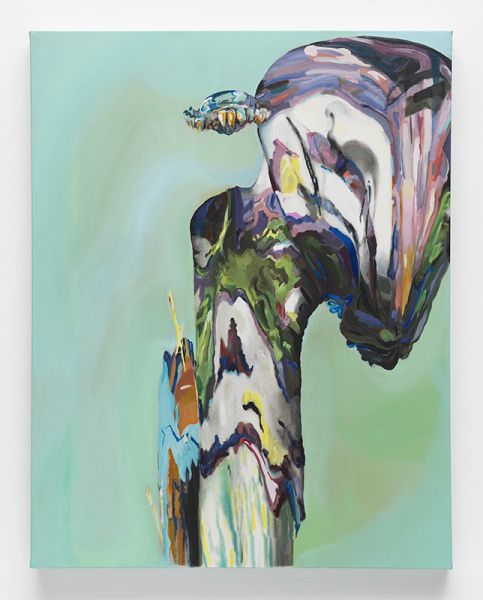Wednesday 13th January 2016
Virtual reality has been a staple of science fiction for the last 50 years and a pipe dream for technology junkies for just as long, but at long last it's finally beginning to become a functional reality. As technological progress accelerates and the economy of scaled production increases, it's actually possible to create a usable, affordable virtual reality headset. So what's the first thing people want to do with it? Make art, of course!
While many people and industries are beginning to experiment with the technology, thanks to the 'content creator' program by VR headset maker Oculus, many artists are able to experiment with the technology that may otherwise be either inaccessible or still a bit too expensive for a tentative exploration.
Enter Florida artist Rachel Rossin, who is a member of the program. Typically working in large-scale oil paintings, Rossin has now incorporated virtual reality into her latest series of works, blending the two media together to create a uniquely meshed experience. Rossin has an advantage in that she started computer programming at age 8, which set the stage for her explorations in new media, but she has also received Bachelor of Fine Arts from Florida State University.
Her self portrait shown on this page is an excellent example of the way she's blended the various aspects of her work, as she explained in an interview with Observer magazine. "Self Portrait, 2015, is an image of myself where I’ve applied gravity to the top of my head, giving it an active swoon. The texture is a painting from my last solo show. I’ve added color by wrapping the portrait in a “skin,” which is actually an image of a painting from my last exhibition.
I think it exposes what’s ephemeral about technology and the nature of tech’s short lifespan, but also how it moves quickly and shifts shape easily, especially compared to something like a painting.
But painting holds a different kind of space, and the richness of that medium has yet to be simulated. I love both mediums very much, and I’m working with painting because I think it holds a significance that virtual reality can’t yet."
It's interesting how the work in VR space shares a number of terms from the more common 3D digital art and video game design, merging them to form new connections and, well, an entirely new reality. As Rossin points out, the technology still has some ways to go before it really takes off, but we can expect 2016 - and years beyond - to hold an unimagined range of brand new possibilities.
Posted on January 13th 2016 on 07:45pm
 Virtual reality has been a staple of science fiction for the last 50 years and a pipe dream for technology junkies for just as long, but at long last it's finally beginning to become a functional reality. As technological progress accelerates and the economy of scaled production increases, it's actually possible to create a usable, affordable virtual reality headset. So what's the first thing people want to do with it? Make art, of course!
Virtual reality has been a staple of science fiction for the last 50 years and a pipe dream for technology junkies for just as long, but at long last it's finally beginning to become a functional reality. As technological progress accelerates and the economy of scaled production increases, it's actually possible to create a usable, affordable virtual reality headset. So what's the first thing people want to do with it? Make art, of course!



